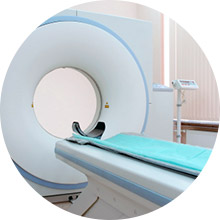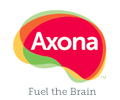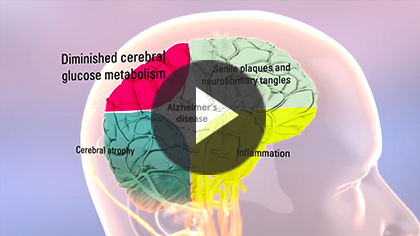Is there a special test for Alzheimer’s disease?
For now, there is no single test that can accurately diagnose Alzheimer’s disease1,2
 Doctors can almost always tell if a person is suffering from memory loss (called dementia), but unfortunately there is not one specific test that helps them know for sure whether the cause of a person’s memory loss is related to Alzheimer’s disease.
Doctors can almost always tell if a person is suffering from memory loss (called dementia), but unfortunately there is not one specific test that helps them know for sure whether the cause of a person’s memory loss is related to Alzheimer’s disease.
The challenge is that doctors do not currently have medical technology that can allow them to see deep inside the brain while a person is still living. They are unable to look for plaques and tangles and metabolic process changes — such as diminished cerebral glucose metabolism — that are commonly associated with Alzheimer’s disease.
Until that changes, doctors may order multiple tests to help determine if a person has Alzheimer’s disease. They will also review a person’s complete medical history, looking for evidence of whether any other family members have had Alzheimer’s disease or dementia-related disorders.
Some of the tests that doctors may order to help diagnose Alzheimer’s disease include:
- A physical and neurological exam to assess a person’s reflexes, coordination, and balance (for example, whether a person is able to get up from a chair on his or her own and walk across a room). Doctors will also assess a person’s eyesight, hearing, and muscle tone and strength
- Blood tests to determine if there may be other medical conditions that are contributing to memory loss and confusion, such as thyroid disease, or if certain vitamin levels are too low, such as vitamin D
- A short mental status test to assess a person’s memory and thinking skills or more comprehensive neuropsychological testing, particularly if the doctor suspects a person may have early stage Alzheimer’s disease
Other helpful tests
A doctor may order special brain imaging tests to look for certain changes in the brain that may be caused by Alzheimer’s disease. These tests can include:
- Computerized tomography (CT) – X-rays are taken from different angles while the person is lying on a table that moves into a chamber. A computer allows doctors to see the brain in “slices,” which are called cross-sectional images. CT is primarily used to rule out other conditions that can affect how the brain functions, such as tumors, strokes, and head injuries
- Magnetic resonance imaging (MRI) – This test is also generally used to rule out other conditions that can affect how the brain functions. Doctors use radio waves and a magnetic field, which helps them see more inside the brain. Like a CT scan, a person lies on a table that slides into a chamber. While the procedure is painless, the vibration of the metal coils in the chamber causes a banging and clanging noise during the test. Some people may find it uncomfortable to be confined inside the MRI test chamber
- Positron emission tomography (PET) – During this test, a person gets an injection that contains a substance called a tracer, which may be a type of glucose (sugar) that allows doctors to see how well the brain uses glucose and oxygen. While a person is lying on a table, an overhead scanner follows the flow of the tracer throughout the brain. Newer versions of PET may also help doctors determine the level of plaques in the brain, which are commonly associated with Alzheimer’s disease
Your loved one may not need to have all of these tests. It may also encourage you to know that early diagnosis helps give people with Alzheimer’s disease the best chance of benefiting from therapy.
Read more about how Alzheimer’s disease is diagnosed. You can also speak to your doctor if you have any questions. Only your doctor can accurately diagnose Alzheimer’s disease.


